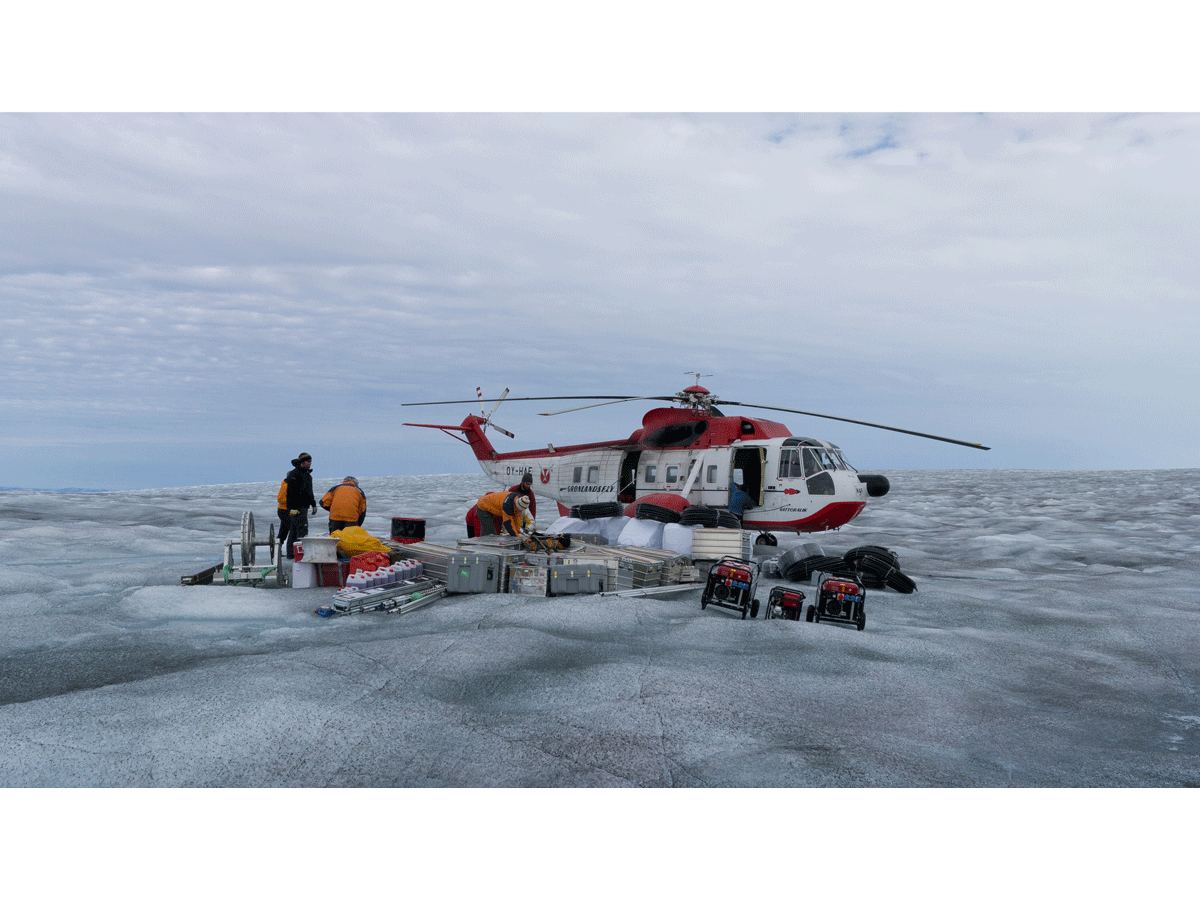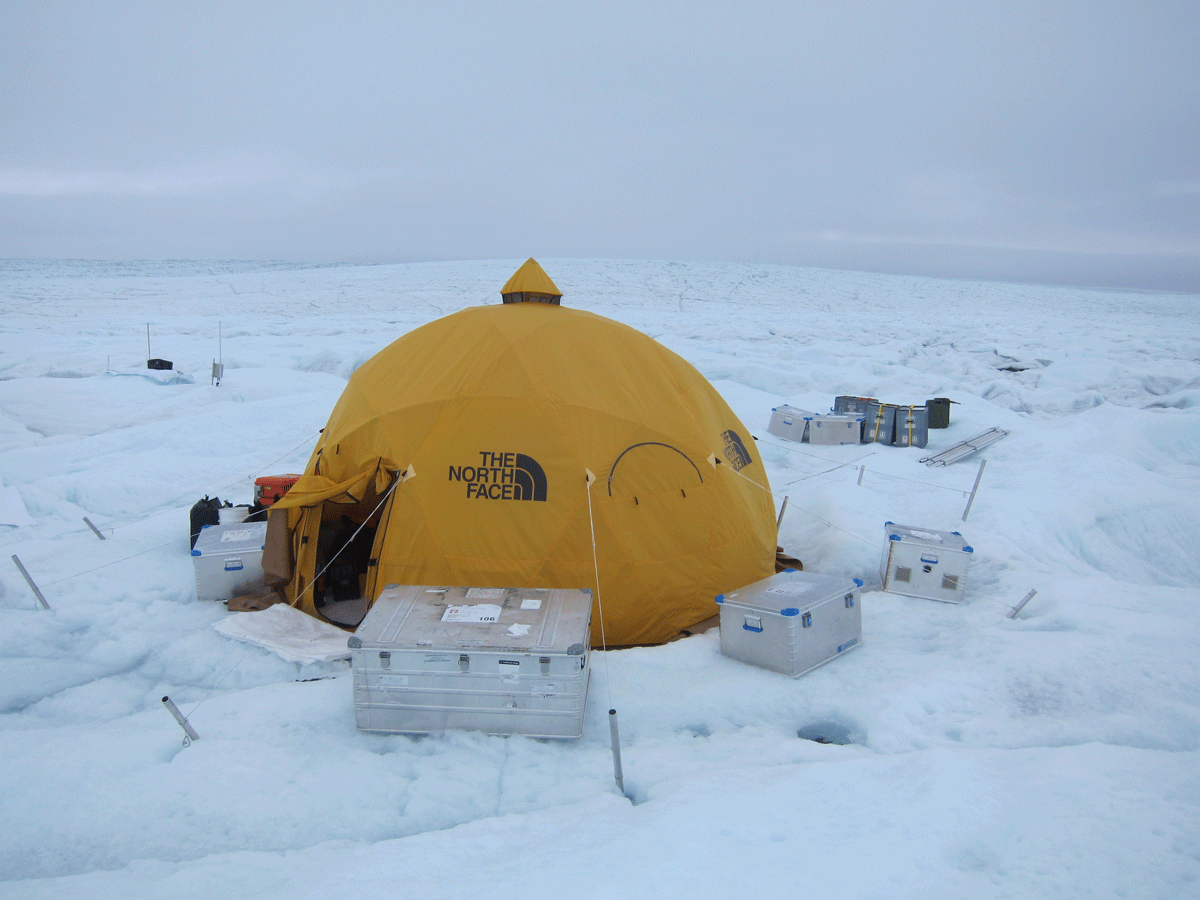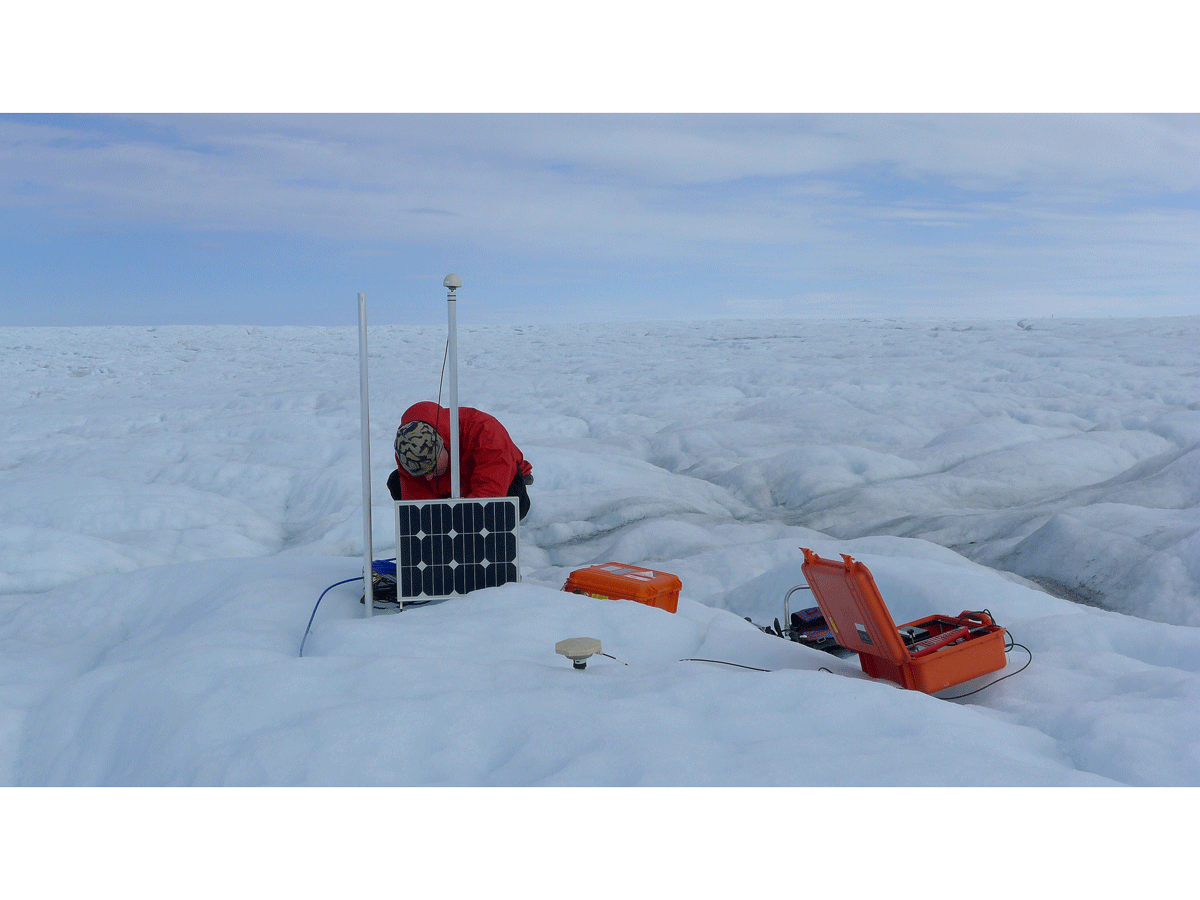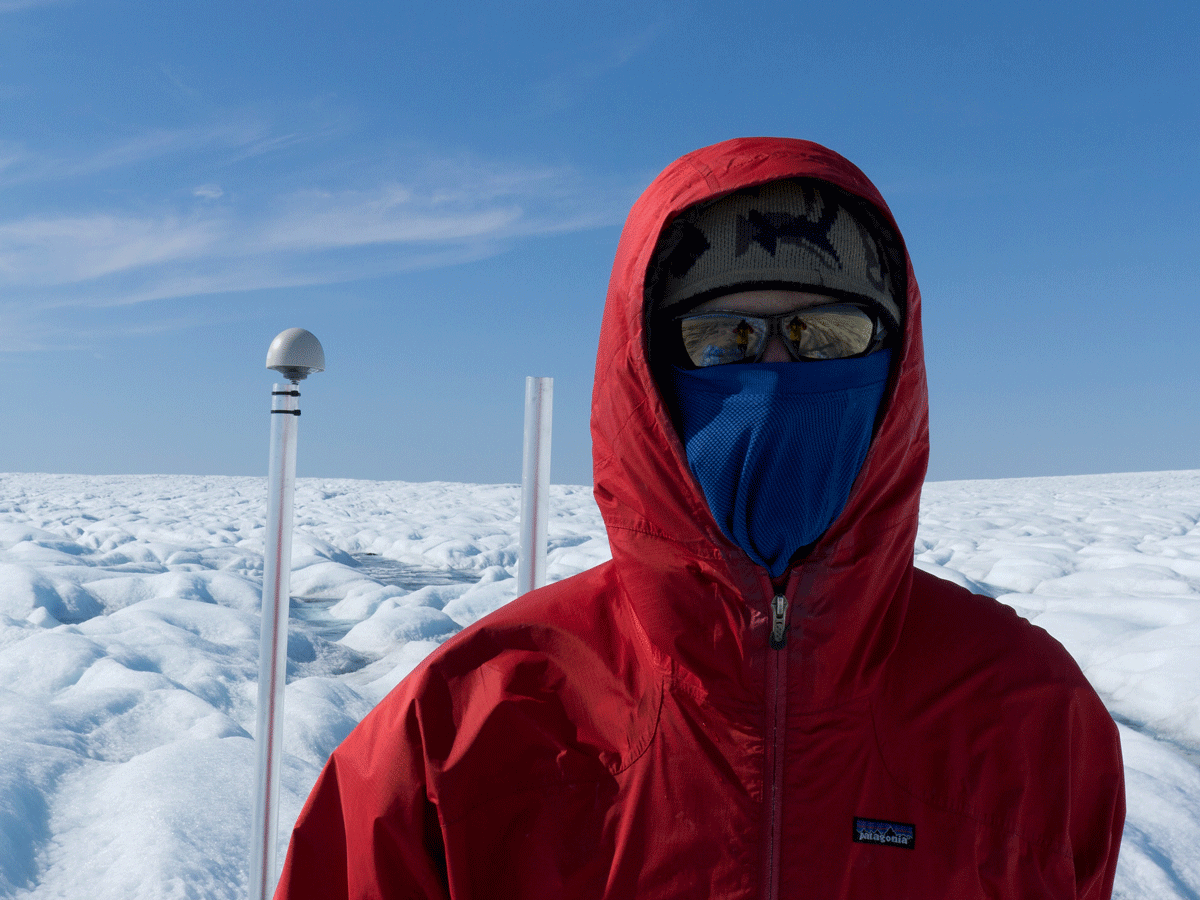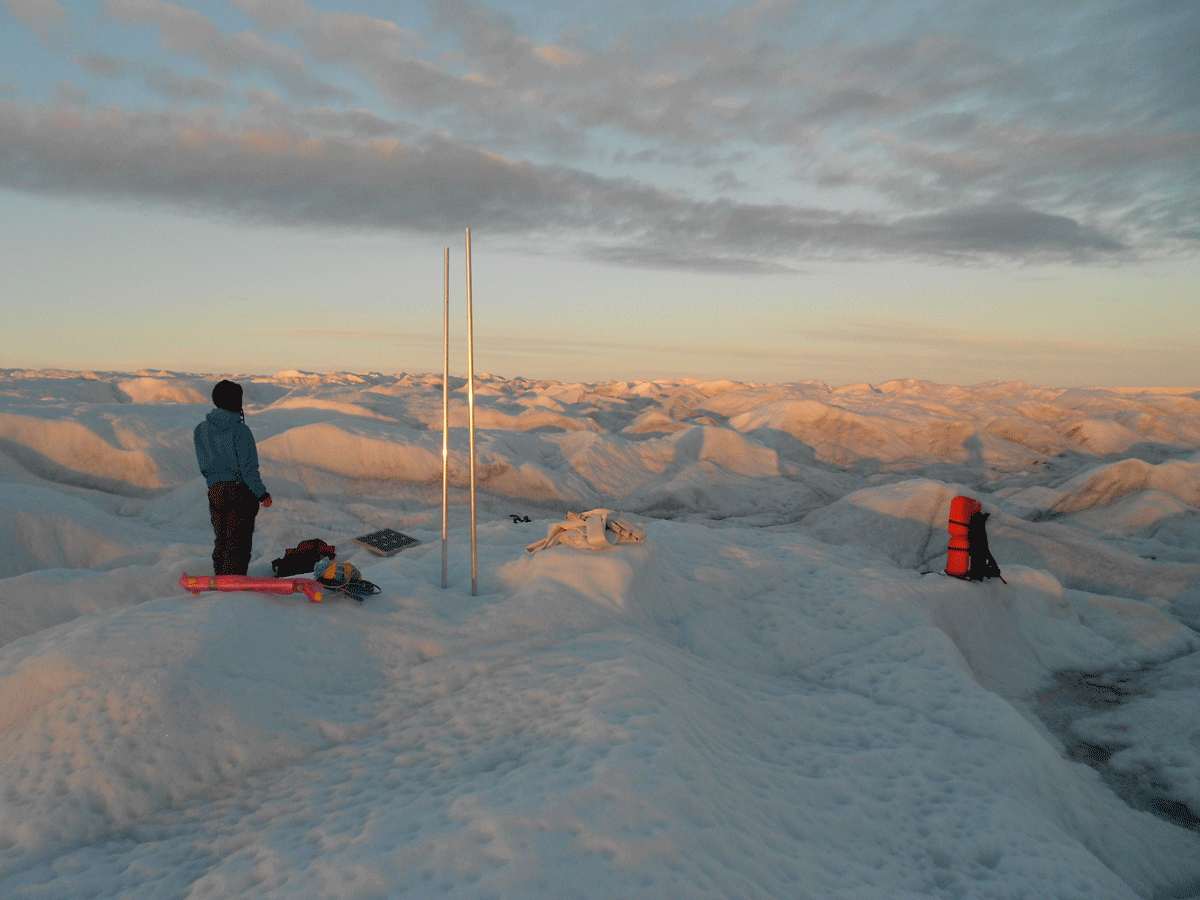Expedition Greenland
In order to better understand Greenland’s subglacial drainage system and its role in ice flow, the Versuchsanstalt für Wasserbau, Hydrologie und Glaziologie (VAW) and the Swiss Seismological Service (SED) conducted a series of field experiments on the Greenland ice sheet in July and August 2011. In an international collaboration over one dozen boreholes were drilled to the glacier bed and equipped with scientific instruments to measure englacial deformation, temperature, basal water pressure and glacier sliding rates. Concurrent seismic monitoring aimed at detecting englacial dislocation processes (icequakes) indicative of hydrofracturing and basal stick-slip motion. With an aperture of about 1.5 km, the seismometer array consisted of 17 seismometers, including three deep borehole seismometers (up to 400 m deep) and two broadband stations.
In combination with the borehole geophysical measurements, the seismic monitoring will elucidate the effects of changes in the subglacial drainage system on glacier motion and ice fracturing. The goal is to understand how high sub-glacial water pressure controls the coupling of the glacier to its bed. This relationship constitutes a critical gap in our current understanding of glaciers and ice sheets yet it is essential to accurate forecasts of melt-induced sea level rise. Accordingly, some models predict that the Greenland Ice Sheet will lose mass in an accelerated manner through a feedback effect: High melt rates at the surface provide melt water which is routed through the sub-glacial drainage system and reduces basal friction, leading to high ice flow velocities and surface draw-down. This effect might induce a rapid decay of the ice sheet, and consequently contribute to global sea level rise.
In this context, the recent episodic increase of Greenland’s ice discharge to the ocean has received much attention and raised concerns about ice sheet stability in a warming climate. Although observations indicate that an increase in ocean temperatures triggered this event, correlation between ice discharge and surface melt has been observed in the past. Furthermore, it is not clear how land-terminating portions of the ice respond to increased surface melt. The ice sheet’s sub-glacial drainage system certainly plays an important role. Yet the question whether it will help enhance or diminish ice flow is currently subject to debate.
For further information visit the following links:
Subglacial Controls on the Short Term Dynamics at the Margins of the Greenland Ice Sheet
